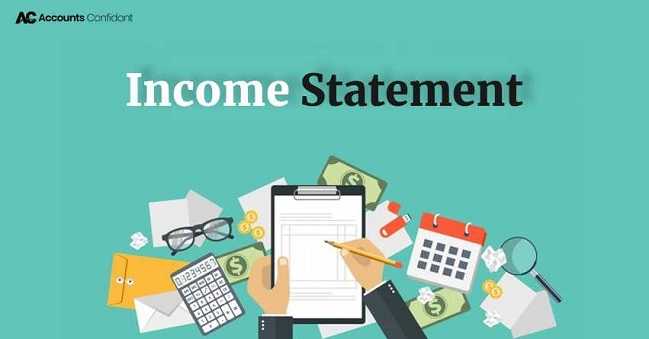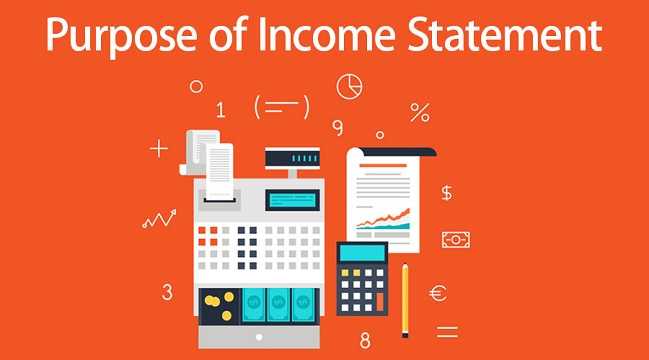How To Prepare Multistep Income Statement

For small businesses that want to prepare an income statement, there are utilizing two reporting options: a single-step income statement or a multi-step income statement.
The reporting options that you choose will be determined by the type of business you own as well as the end goal of the income statement you're creating.
Income statements, both single-step and multi-step, report on a company's revenues, expenses, and profit or loss during a specific reporting period.
A single-step income statement or a multi-step income statement are the two reporting options for a small business income statement.

The format you use depends on the type of business you own and the end goal of the income statement you're creating.
Income statements, both single-step and multi-step, provide information about a company's revenues, expenses, and profit or loss for a given reporting period.
What’s a Single-Step Income Statement?
A single-step income statement shows a company's revenue, expenditure, and, ultimately, profit or loss, but it does so by using only one equation to calculate profits. A single-step income statement employs the following equation:
Net Income = (Revenues + Gains) - (Expenses + Losses)
The single-step income statement provides a straightforward accounting of your company's financial activity.
It's simple to understand and relatively simple to prepare.
A multi-step income statement is usually a statement that divides the income, expenses, profits, and losses into two categories which are known as operating items and non-operating items.
The multi-step income statement makes it easier for users to gain a better understanding of core business operations by organizing all of these items into different sections or categories.
On the other hand, in the format of a single-step income statement, all revenues are combined under one main heading, i.e., income listing and all expenditures are combined under the Expenses heading.
How to Prepare an Income Statement
You must first decide whether you will track your expenses monthly, quarterly, or yearly when you want to create a multi-step income statement.
To create your income statement make sure it includes the following information:
- A heading which must be stated as “Income Statement”
- The header should contain the date, period covered, as well as the name of your company.
- It should have the operating revenues.
- It should contain the operating expenses.
- Add the gross profit.
- Add the operating income.
- You should also include the non-operating revenues and expenses.
- Add the company’s net income.
A single-step income statement is not commonly used to prepare and present an entity's income statement.
However, both IFRS and US GAAP permit the use of this format.
The advantage of this format is that users can easily understand what the entity's income and expenses are for the period being displayed.
However, because this format treats all types of revenues in only one section, it may miss leading users of income statements, particularly non-accounting experienced users.
Components of a Multi-Step Income Statement
This consists of three key components:
Gross Profit
The gross profit is calculated by deducting the cost of goods sold from total revenue yields the gross profit.
The gross profit relates to a company's core activity and shows how profitable it is in manufacturing its product.
At this time, no other costs are included.
So, using the gross profit is a straightforward method for analyzing a company's business model.
Selling and General Admin Expenses
The selling expenses of a business are the costs incurred by the business when it sells its product or services to a customer.
The cost must include freight charges, salesperson salaries, marketing expenses, as well as other costs directly related to the sale.
You must also understand that administrative expenses are usually part of the general expenses and cannot be directly attributed to the sale of goods, but they are still a part of the core operations.
These costs may include administrative salaries, factory and warehouse rent, utilities, and so on.
Non-Operating Items
Those two components mentioned above are directly related to the company's operations.
So, the third component of the non-operating head contains all revenue and expense items that usually do not contribute to the major operations of a business in any way.
Multi-Step Advantages
Users benefit from the multi-step income statement in a variety of ways.
When you use the multi-step option, you will have detail as well as the multiple levels of income reported.
Each level of income is calculated by deducting each category of expense.
Some good examples include gross profit, operating income as well as net profit.
Multi-Step Disadvantages
One major setback is the fact that you need an accountant to prepare a multi-step income statement.
Since you may not have the full skills, you require the accountant to classify each expense into the appropriate categories, which is a disadvantage.
In order to determine each type of income, the accountant must perform a number of calculations.
One more disadvantage is that the user of the financial statement may not understand the meaning of each level of income.
Author Bio
For over 4 years, Saalim has worked as a branding, digital marketing, and SEO expert. He has been assisting with website design, SEO strategy, content marketing, and user experience improvements. He publishes on a variety of topics and is a contributing writer to a number of high-quality blogs and websites.
Article Comments
No Comments!
At present there are zero comments on this article.
Why not be the first to make a comment?
Similar Articles
Sponsor
Search Articles
Experts Column
Latest Articles
Featured Articles
Most Popular Articles












